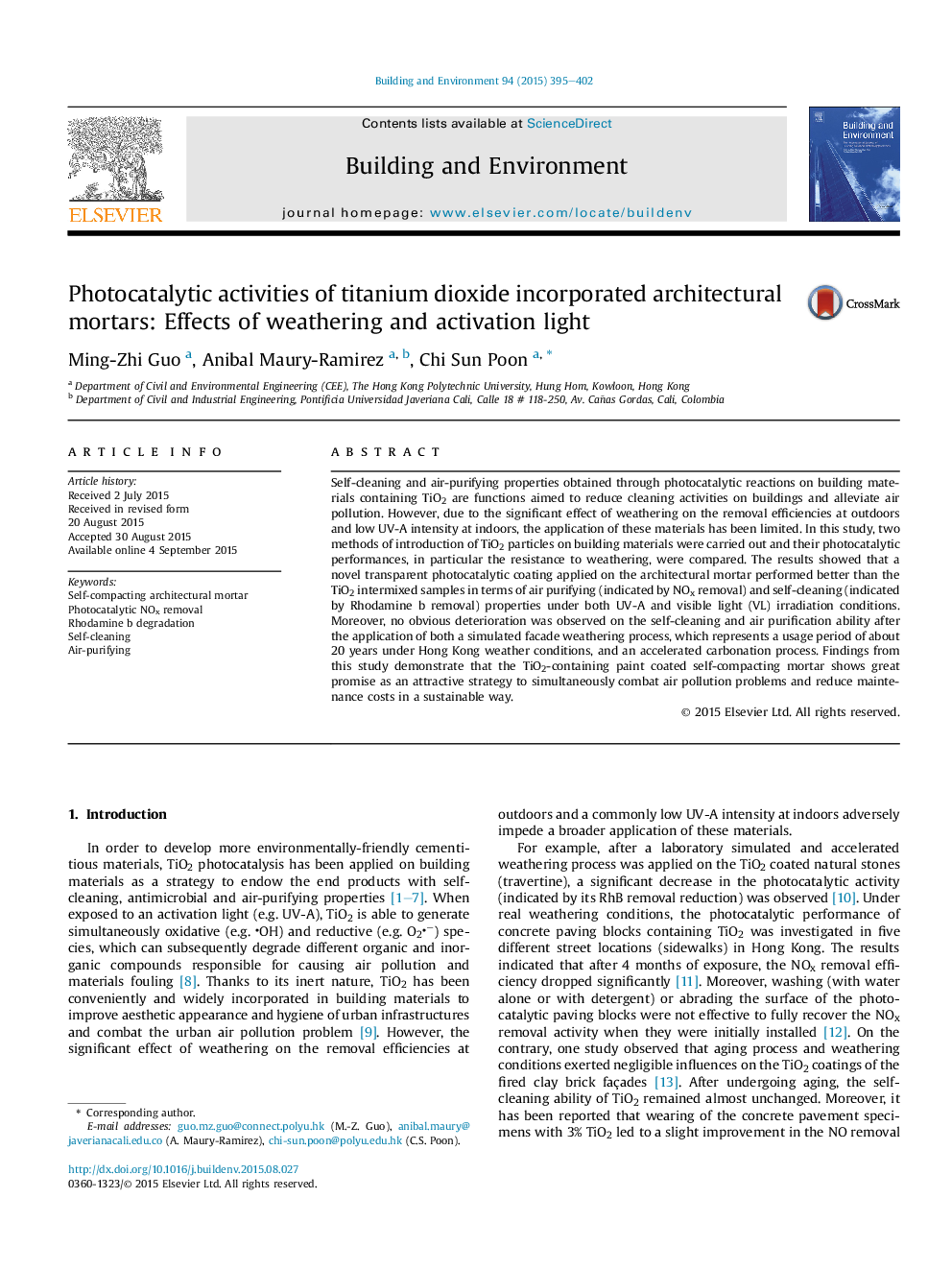| Article ID | Journal | Published Year | Pages | File Type |
|---|---|---|---|---|
| 247822 | Building and Environment | 2015 | 8 Pages |
•Two TiO2 adding methods conferred self-cleaning and air-purifying ability on mortars.•TiO2 paint coated mortars performed better both in RhB degradation and NOx removal.•A robust weathering-resistant capacity was displayed by paint-coated mortars.•Paint-coated products show great promise for both indoor and outdoor applications.
Self-cleaning and air-purifying properties obtained through photocatalytic reactions on building materials containing TiO2 are functions aimed to reduce cleaning activities on buildings and alleviate air pollution. However, due to the significant effect of weathering on the removal efficiencies at outdoors and low UV-A intensity at indoors, the application of these materials has been limited. In this study, two methods of introduction of TiO2 particles on building materials were carried out and their photocatalytic performances, in particular the resistance to weathering, were compared. The results showed that a novel transparent photocatalytic coating applied on the architectural mortar performed better than the TiO2 intermixed samples in terms of air purifying (indicated by NOx removal) and self-cleaning (indicated by Rhodamine b removal) properties under both UV-A and visible light (VL) irradiation conditions. Moreover, no obvious deterioration was observed on the self-cleaning and air purification ability after the application of both a simulated facade weathering process, which represents a usage period of about 20 years under Hong Kong weather conditions, and an accelerated carbonation process. Findings from this study demonstrate that the TiO2-containing paint coated self-compacting mortar shows great promise as an attractive strategy to simultaneously combat air pollution problems and reduce maintenance costs in a sustainable way.
